"March is Fallas" in Valencia and for those who don't know what it is yet, it is basically the biggest festival in the country and probably the least famous in relation to its size. It is also a little complicated to understand all the different aspects associated with the festival so for those who want to learn a little more before going, here is a little breakdown to help make some sense of it all:
Fallas Committees
The Junta Central Fallera (or Fallas Central Board) is its governing body and organizes all official events. Every monument is set up by an association called a “comisión fallera” (Fallas Committee), managed by its members, the “Falleros”.
The Fallas Committees are groups in charge of organising and setting up the Fallas Fiesta. They take their names from the intersection of streets or squares where they set up their Fallas monument.
Every year, each Committee appoints its top representative for the Fallas Fiesta: its own “Fallera Mayor”. The other women in the group make up the Court of Honour that accompanies her in the Fallas week’s events. Likewise, each Committee has a Children’s Section, which is represented by its own “Fallera Mayor Infantil”.
At present, there are more than 400 Fallas Committees listed officially in the city of Valencia, and a similar number again scattered all over the Region of Valencia, and the total number of Falleros and Falleras easily surpasses a hundred thousand people.
Falleras Mayores

The two “Falleras Mayores de Valencia” (one adult and one child) are the queens of the fiesta, the official representatives of the entire Fallas organisation. The child selected bears the title of “Fallera Mayor Infantil de Valencia”.
These titles have reached a considerable level of importance and they frequently appear at the city’s most significant events throughout the year.
Artista Fallero
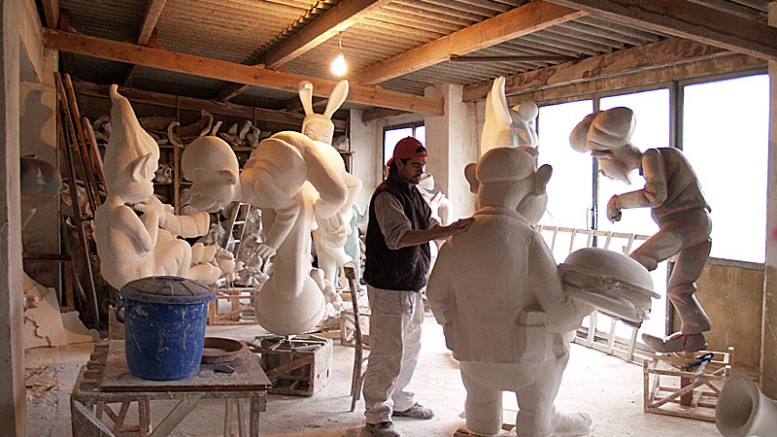
The enormous number of professionals that depend directly or indirectly on the Fallas Fiesta gives an idea of how large and important it has become for the city.
One of the most interesting places to visit to get a better idea of these artists’ work is the “Ciudad del Artista Fallero”, a number of huge workshops where the Fallas monuments are constructed. The whole year round, it sees a frenzy of ongoing work and it is common to find dozens of curious onlookers, interested in seeing for themselves how a Falla is made.
Apart from the “artista fallero”, there are other professions associated directly with the fiesta: there are regional shops, jewellers, hairdressers specialising in the Valencian hairstyle, shoe shops, textile factories (particularly those making silk), and fireworks manufacturers.
Fallas
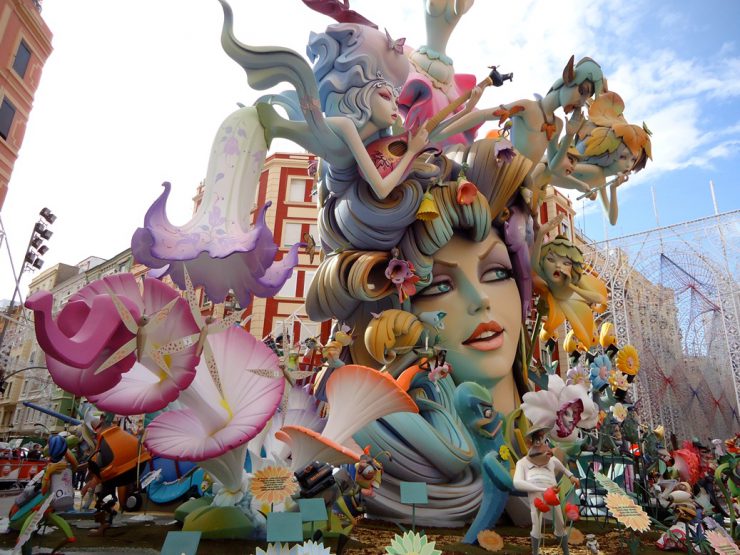
Falla is the name given to each one of the gigantic, sculpted structures of cardboard, wood and sometimes cork, which humorously portray events and personalities.
Every monument has a subject matter, or general theme. On that basis, the artist plays with intentions and ideas, using the subject as a pretext to portray what he or she wants to say.
Even though they are colossal monuments (they can exceed 20 metres in some cases), the most spectacular thing about the Fallas is the way they combine sculpture, carpentry, engineering, painting and, in particular, creativity and humour.
A Falla does not only consider style, composition and modelling. A fundamental role is also played by ingenuity and humour. These are the Fallero terms to define the wit and irony of the artists or writers who devise a monument, when portraying the most significant current events or ferociously criticizing what they consider most deserves it.
The Fallas monuments are distributed in sections, according to their size and budget (costs can range from €6,000 to €600,000).
Ninots
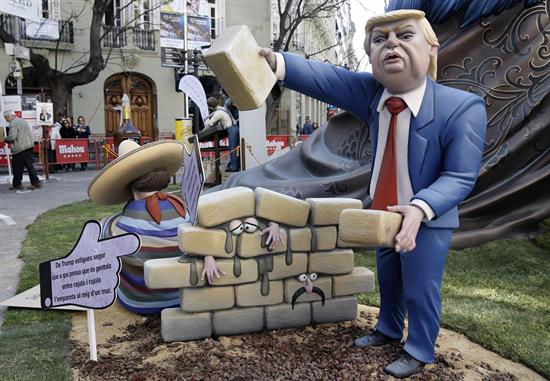
The ninots are the individual figures that make up the scenes in the Fallas monuments. At the beginning of February, each Committee donates its best ninot to an exhibition that is open to the public up until the day of the plantà (see below) when each figure is collected by its Committee and taken back to the Fallas monument it belongs to on a noisy and colourful parade with whistles and brass bands.
Cabalgata del Ninot

A parody parade where the participating Committees dress up to portray famous personalities or current events in a critical or satiric way, playing with double meanings or even provocation. This parade takes no political sides and has no taboos: any institution, person or event currently in the public eye can become the subject of criticism. As a result, it is seen as a Falla on the move with its “human Ninots”.
Cabalgata del Ninot Infantil
Here it is the children who make up the amusing, colourful, lively parades. Although its themes obviously don’t reach the same levels of mordacity as its elder namesake, this cavalcade also includes a fair dose of satire and humour, more suited to the public it is aimed at.
Each visitor to this exhibition has the chance to vote for the ninot that he or she likes best: whether because of its originality or its design. When the time comes to close the exhibition, the votes are added up and the ninot with the largest number of votes is saved from the flames: this ninot indultat will have the honour of being the only ninot in all of Valencia that will not burn on the night of the 19th.
Cabalgata Folclórica Internacional
With the Fallas in full swing, the city centre welcomes communities and groups from around the world to portray their customs, folklore and celebrations. It is a dynamic festival that combines music and colour with elements of tradition and culture.
Despertà
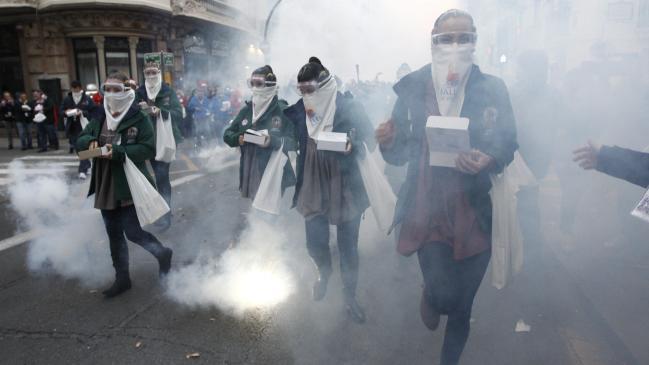
This refers to the act of waking up the neighbourhood. How? Very simple: by setting off hundreds of firecrackers first thing in the morning. The “Falleros” come out into the streets at dawn, armed with a kind of local firecracker known as “tró de bac”, which has no fuse and is set off by throwing it at the ground, making a very loud bang.
Mascletà
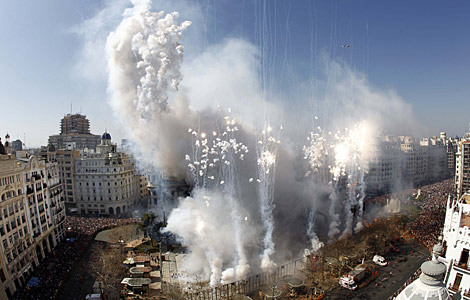
Like a concert of gunpowder: pyrotechnicians carefully study the rhythm of firework sequences, launches and whistles, combining them in a spectacular crescendo that concludes with the “terremoto” (earthquake): hundreds of “masclets” exploding on the ground simultaneously.
The City Council of Valencia organizes a calendar of “mascletaes” from the 1st of March to St. Joseph’s Day (19th March), at the Plaza del Ayuntamiento, the city’s urban centre. At 2pm thousands and thousands of people congregate there, every day.
Nit del Foc
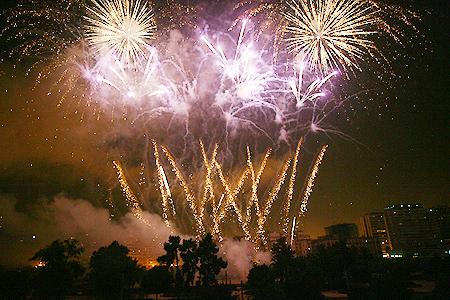
(literally “Night of Fire”), this pyrotechnical festival takes place on the night between the 18th and the 19th of March and acts as a preamble to the main day of the Fallas.
Ofrenda de Flores a la Virgen de los Desamparados
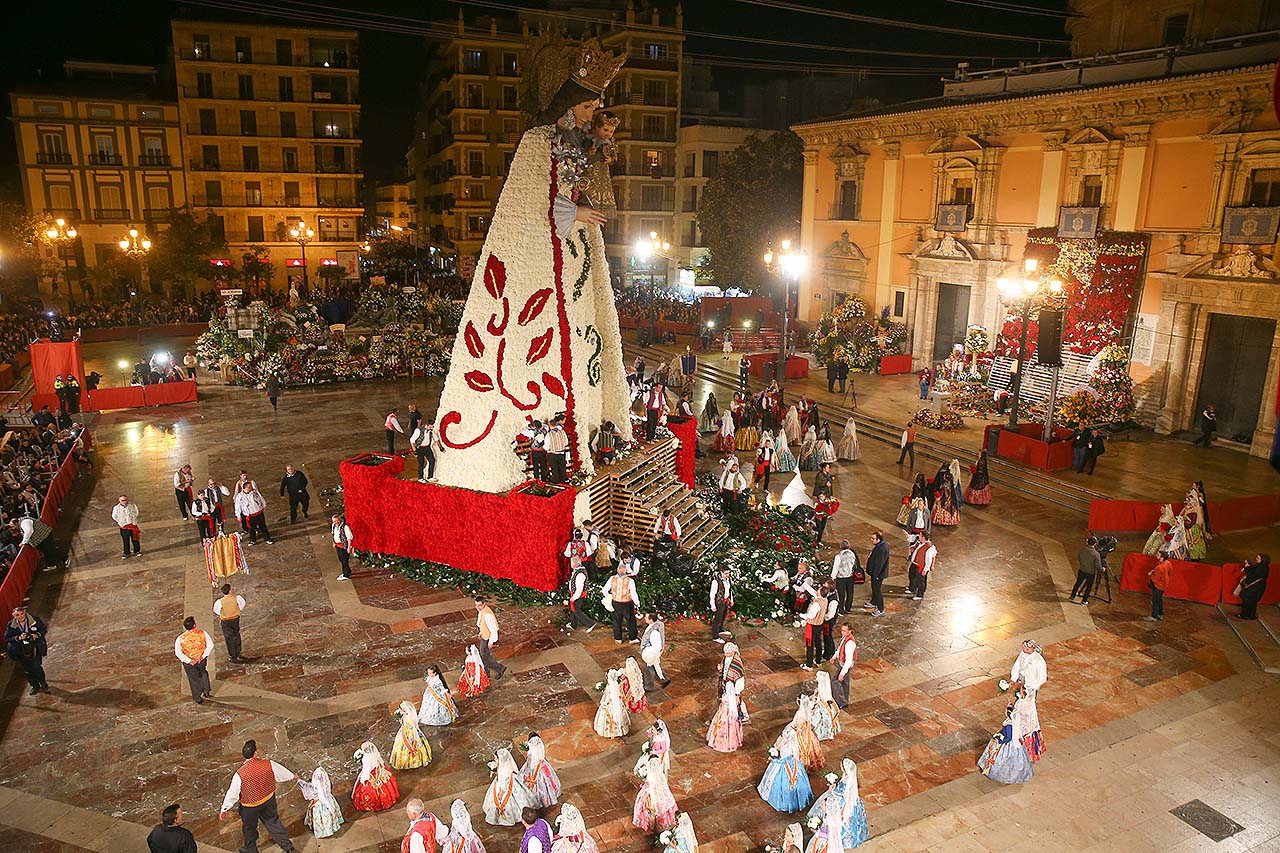
A floral offering to the Kingdom of Valencia’s patron saint, Our Lady of the Forsaken. All the Fallas Committees take part in this event, decked out in their finest, to present their bouquets of flowers to the enormous image of the Virgin which stands in the centre of the plaza named after her, overlooked by her Basilica.
A parade of thousands upon thousands of “Falleras” and “Falleros” fills the city streets, wearing regional costumes and adding to the visual charm with the colours of the flowers. Each Committee brings its own music band and, in some cases, a spectacular basket with the most original and creative floral decorations.
Because of their incredible numbers of participants, the Offering is held on two days (17th and 18th March) and, for many reasons, it has now become the Fallas week’s central event.
La Plantà
In translation, la plantà means something like “finishing touches”. It is actually the moment when the Falla’s top part is finally put in place. Since the Fallas are higher and more spectacular every year, the positioning of these pieces has become a difficult task which may take several days and which is observed with great expectation by dozens of onlookers.
Over time, the expression has become generalised: the “plantà” is now taken to be the exact moment when the Falla is completely finished and ready to be visited, with all its “ninots”, posters and various details (grass, lights, explanatory signs, etc.)
This takes place on the night of March 15th.
Cabalgata del Fuego
(Fire Parade) takes to the streets of Valencia in the evening of 19th March.
Fire is the fiesta’s symbolic spirit and the Fallas’ final destination. This is a colourful, noisy event, with floats, people in costumes, rockets, gunpowder, street performances, music – all at nightfall, as the time approaches for the Ninots to be consumed by flames.
Cremà
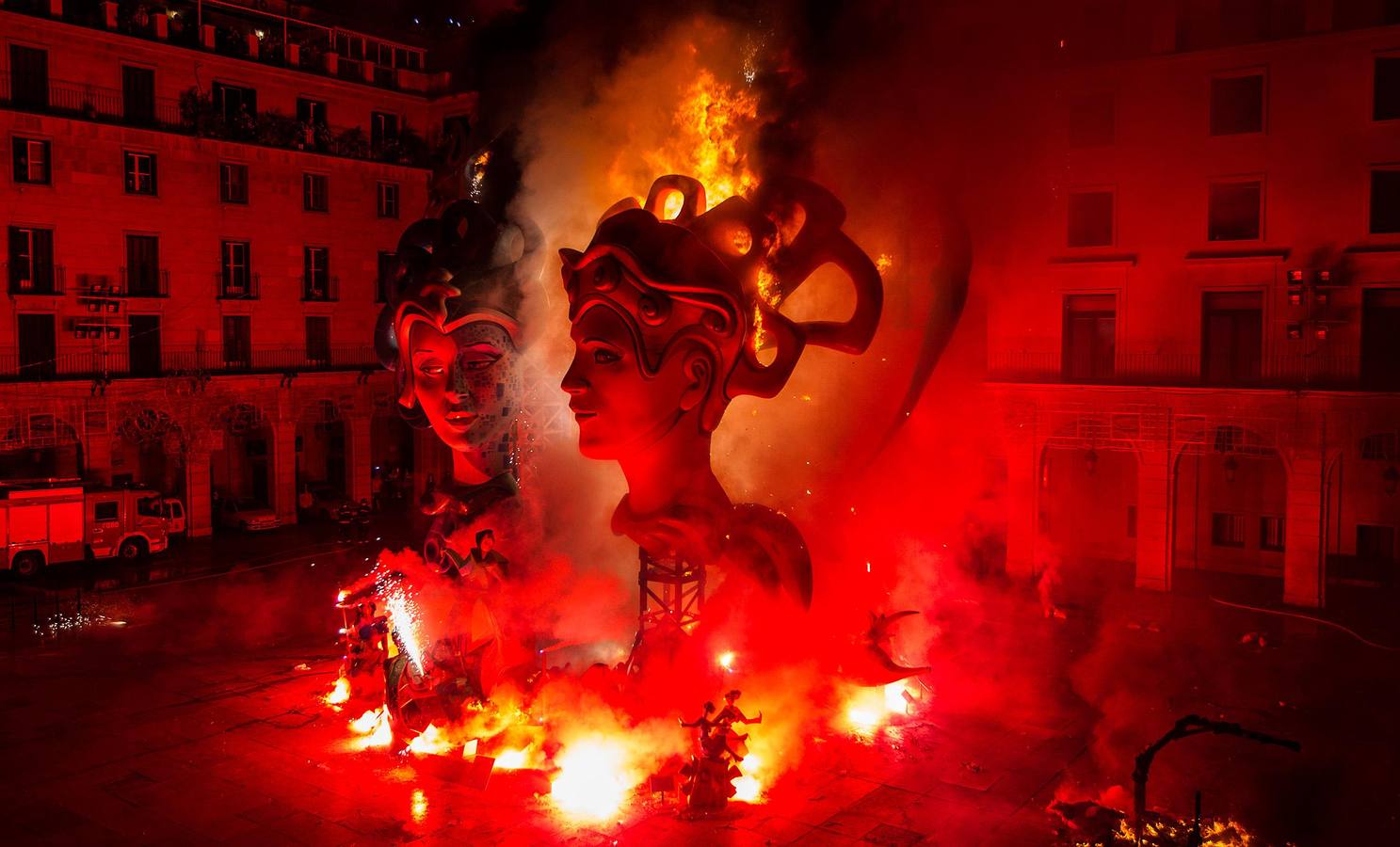
In contrast to the Plantà, which marks the proper start of the Fallas Festival, the Cremà marks its finish.
It is probably the most popular event internationally and the one that gives the concept of “Fallas Fiesta” its full meaning: the monuments are exhibited in the street to be burnt. That is their fate and, at the same time, their grandeur.
In the small hours between the 19th and 20th of March, enormous pyres burn around the whole city. The splendid monuments, which a few hours before stood proudly in the streets and squares, are reduced to ashes amidst the clamour of hundreds of people who attend the ritual every year.
Symbolically, the “Falleros” throw everything that is considered to be superfluous, harmful or simply unusable onto the bonfire and, by doing so, aim to make a new start and regenerate the spirit. This objective has always been the basis of this kind of pagan rite, since ancient times.
Verbenas
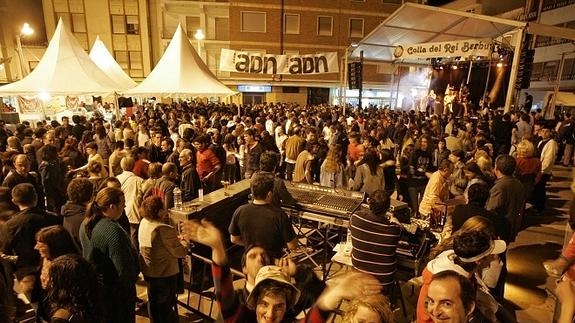
In each neighbourhood, The Fallas Committees organize a large number of street parties known as Verbenas, where locals meet to dance and have a good time. Everyone who wants to join in is given a warm welcome, so they are ideal for visitors, who are sure to find a friendly, laid-back atmosphere.
Now you are ready for Fallas!
For the full programme calendar 2024 click here